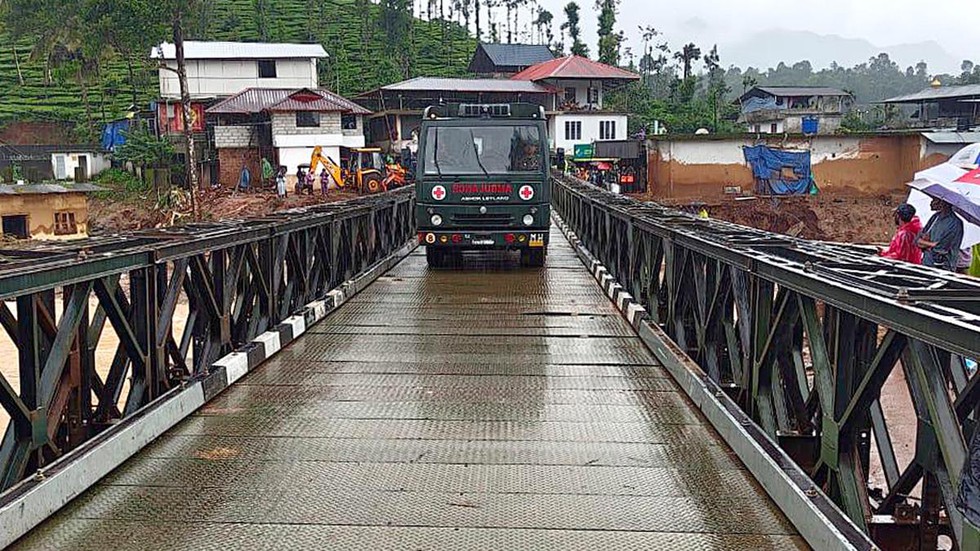About Bailey bridge:
- It is a type of modular bridge, one whose parts are pre-built so that they need minimal construction work and can be assembled quickly when needed.
- Origin: A US Army Engineer School manual notes that the Bailey bridge originated during wartime. Donald Coleman Bailey, an English civil engineer, invented it during World War 2 (1939-45).
- How the Bailey bridge works?
- The pre-fabricated parts in a Bailey bridge include light steel panels linked through pins, which are big, screw-like objects.
- These help establish the guardrails of the bridge. Through the guardrails on either side, workers place beams to form the deck or path of the bridge.
- All beams were constructed such that they would lock in on the guardrails to ensure stability.
- After that, the bridge can be extended, and the lightness of the parts allows it to be mobile.
- No heavy installation equipment is needed. In disaster relief situations, this is ideal because parts can be transported in small trucks — something also of use during wartime.
Key facts about Madras Sappers
- The Madras Sappers is an engineering group of the Corps of Engineers of the Indian Army, which originated in the erstwhile Madras Presidency army of the British Raj.
- This regiment has its headquarters in Bengaluru.
- The Madras Sappers were the only regiment of the Madras Presidency Army to survive the reorganisations that took place between 1862 and 1928.
